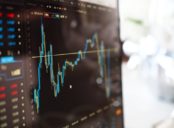Day Trader: Maximizing Profits Through Intraday Trading

Introduction
Day trading, or intraday trading, is a popular practice in the financial markets where traders buy and sell financial instruments within the same trading day, aiming to profit from small price movements. This article provides a comprehensive overview of day trading, exploring its various types, popular strategies, quantitative measurements, differences between day traders, and a historical analysis of its pros and cons.
I. Understanding Day Trader

Day trading involves executing multiple trades throughout the day to take advantage of short-term price fluctuations. Unlike long-term investors, day traders aim to capitalize on smaller gains by frequently entering and exiting positions within a single trading session. This approach requires careful analysis, risk management, and quick decision-making.
II. Exploring Types of Day Traders
a) Scalpers: Scalpers are day traders who focus on making swift trades to capture small price differentials. They capitalize on liquidity and market inefficiencies, often entering and exiting positions within seconds or minutes.
b) Momentum Traders: Momentum traders identify and trade securities with significant price momentum. They look for stocks moving with strong volume and trend, aiming to profit from the continuation of the existing trend. Momentum trading involves using technical analysis tools to identify potential entry and exit points.
c) Pattern Day Traders: Pattern day traders analyze chart patterns and technical indicators to identify potential reversals or breakouts. They aim to profit from predictable price patterns that occur frequently in the market.
d) News-based Traders: News-based traders focus on capitalizing on significant news events or corporate announcements that impact the financial markets. They closely monitor news sources, press releases, and economic indicators, aiming to make quick trades based on information asymmetry.
III. Quantitative Measurements in Day Trading
Day trading involves the use of various quantitative indicators to guide trading decisions. These measurements help traders assess market volatility, liquidity, and potential profitability.
a) Average True Range (ATR): ATR measures the average price range over a specific period, indicating market volatility. By considering the ATR, day traders can adjust their position sizes to account for market fluctuations and set realistic profit targets.
b) Volume Analysis: Volume analysis provides insights into market liquidity and the strength of price movements. Analyzing volume patterns can help day traders identify potential reversals or validate trend continuations.
c) Relative Strength Index (RSI): RSI is a momentum oscillator that measures the speed and change of price movements. Day traders use RSI to identify overbought or oversold conditions, indicating potential market reversals or trend continuations.
IV. Differences Between Day Traders
Despite the common goal of intraday trading, day traders can vary significantly in their approach, risk tolerance, and time commitment. Some key factors that differentiate day traders include:
a) Trading Style: As discussed earlier, day traders differ in their chosen trading styles, such as scalping, momentum trading, pattern analysis, or news-based trading.
b) Risk Management: Day traders have varying risk management strategies, determining factors such as position sizing, stop-loss orders, and profit targets.
c) Time Commitment: While some day traders dedicate their entire day to trading, others have limited time availability. This difference influences the frequency and duration of their trades.
V. Historical Pros and Cons of Day Trader
Over the years, day trading has attracted both praise and criticism. Understanding its historical pros and cons is crucial for aspiring day traders.
a) Pros:
– Potential for High Returns: Day trading offers the opportunity for substantial profits due to frequent trading and capturing small price movements.
– Quick Feedback Loop: Day traders receive immediate feedback on their trades, allowing them to adapt and learn from their mistakes quickly.
– Flexibility: Day trading provides flexibility in terms of time commitment, as traders can choose to actively trade part-time or make it a full-time profession.
b) Cons:
– High Risk and Volatility: Day trading involves significant risk due to market volatility and fast-paced decision-making. Loses can occur quickly if proper risk management strategies are not in place.
– Emotional Stress: The constant pressure and quick decision-making can lead to emotional stress and fatigue for day traders.
– Regulatory Constraints: In many jurisdictions, day trading is subject to specific regulations, such as the Pattern Day Trader (PDT) rule in the United States, limiting trading opportunities for smaller accounts.
Conclusion
Day trading, with its potential for high profitability and rapid trading, is an appealing option for many individuals. By understanding the different types of day trading, quantitative measurements used by traders, variations among day traders, and historical pros and cons, individuals can make informed decisions about pursuing day trading as a part-time endeavor or a full-time profession. As with any investment activity, careful research, risk management, and continuous learning are essential to maximize the chances of success in the dynamic world of day trading.





















